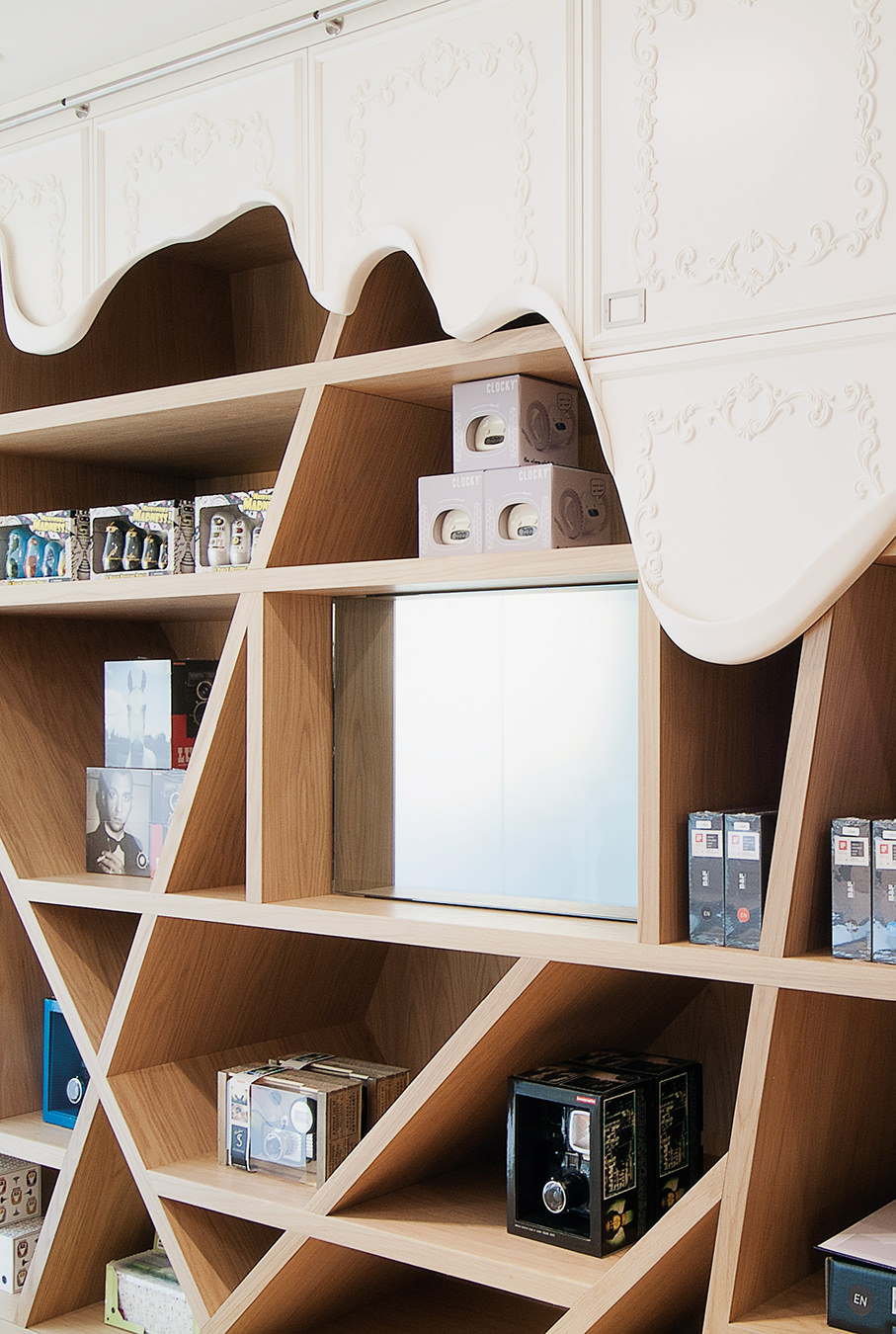-
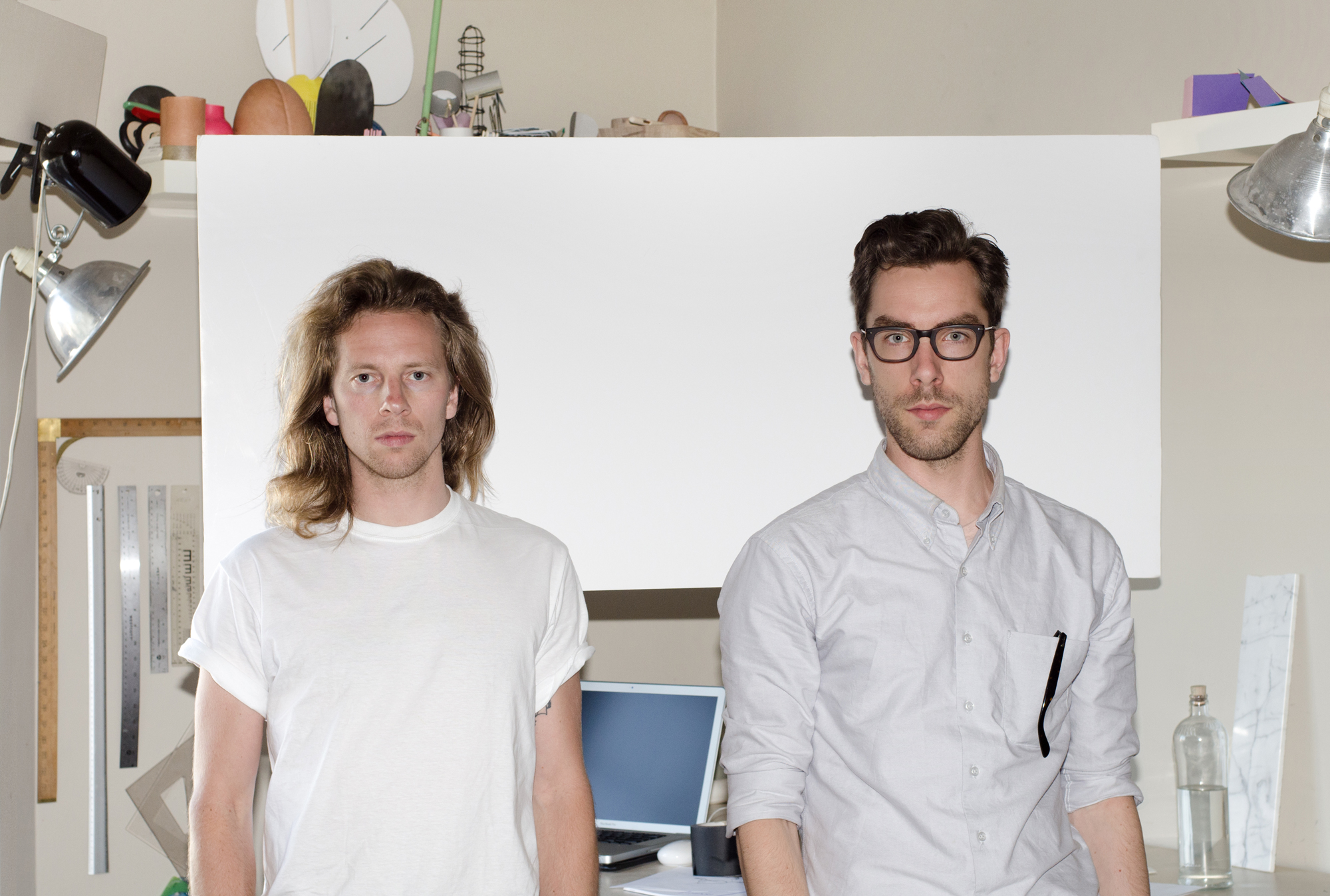
D Calen Knauf and Conrad Brown.
-
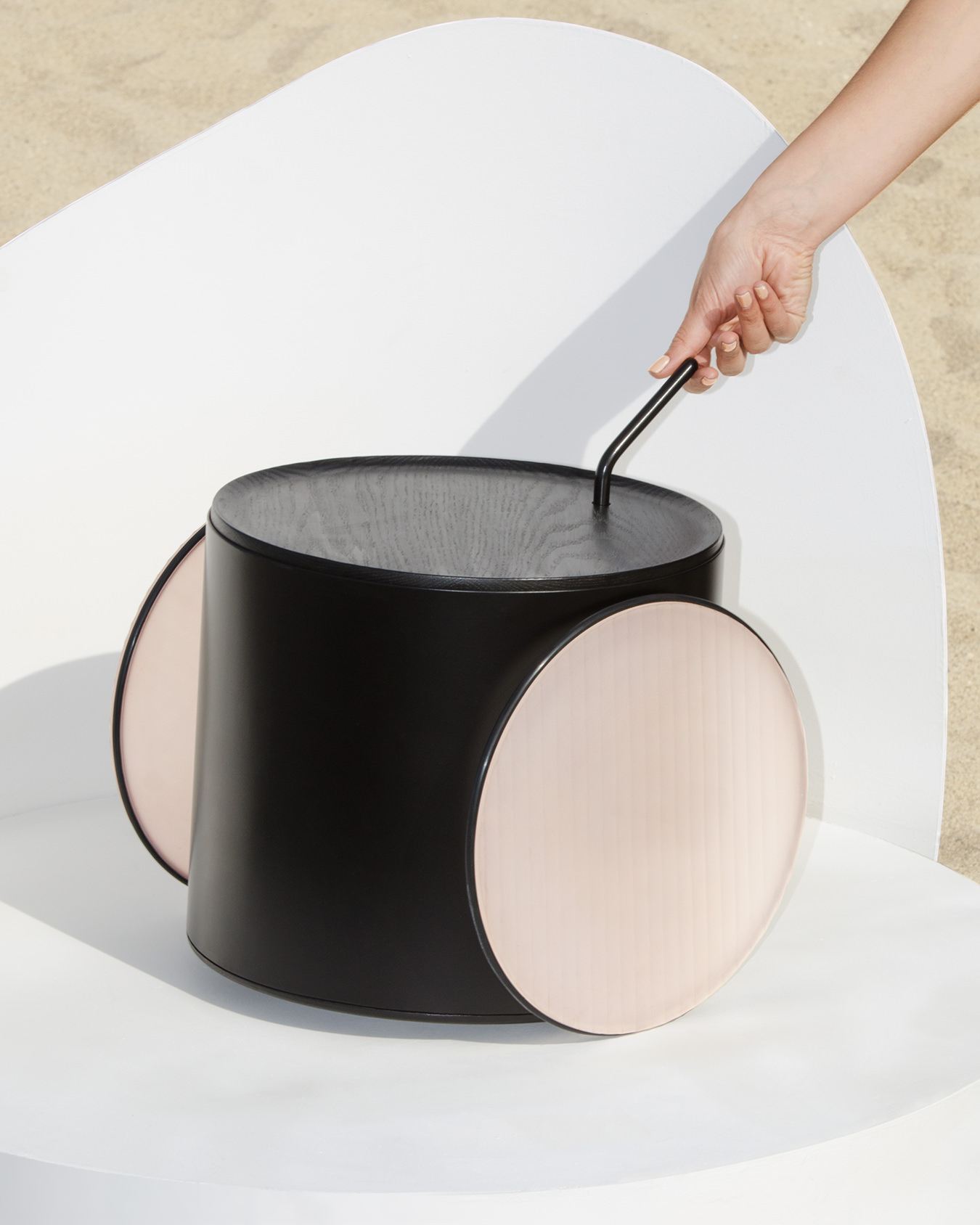
Knauf and Brown’s Floor Coaster.
-
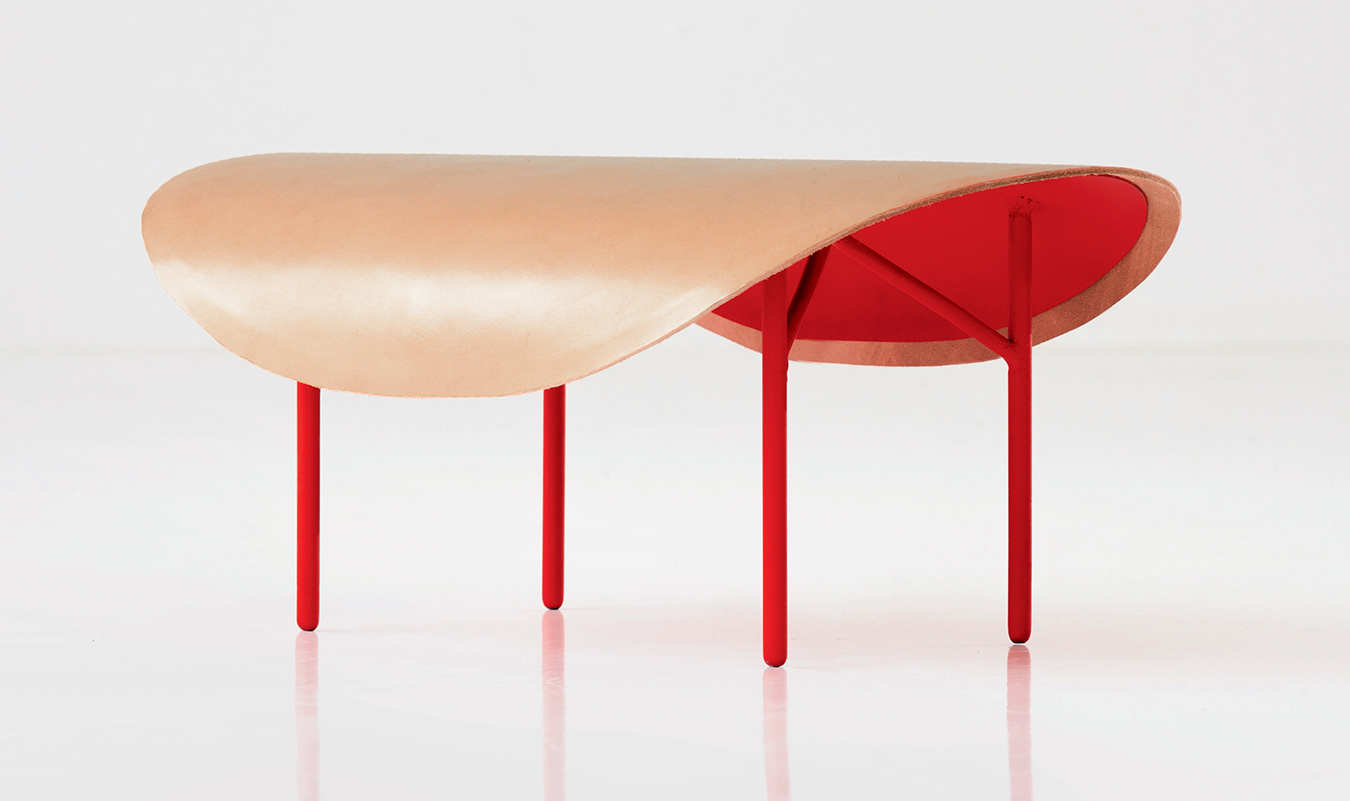
Knauf and Brown’s Tack stool.
-
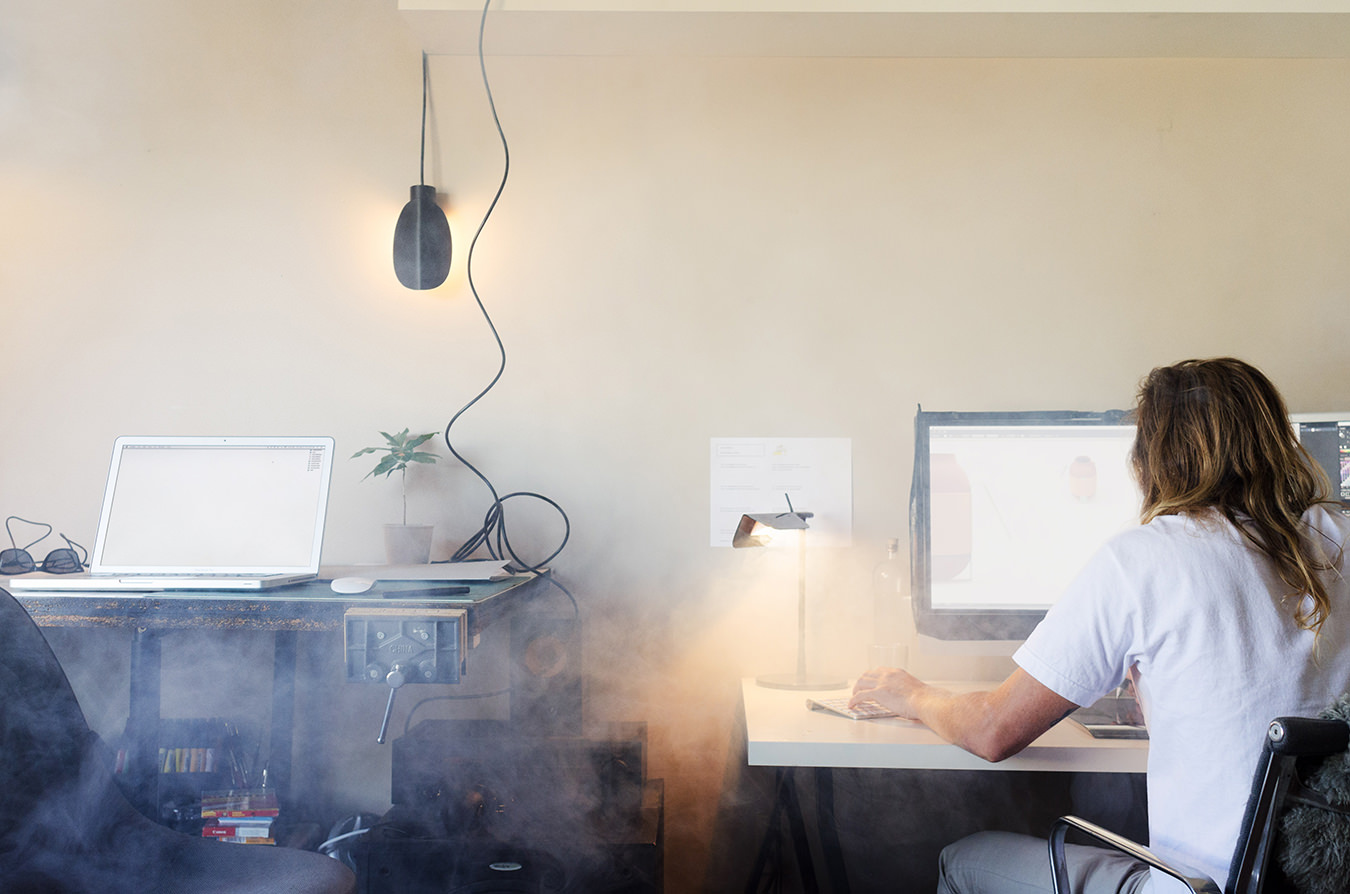
Knauf and Brown’s studio.
-
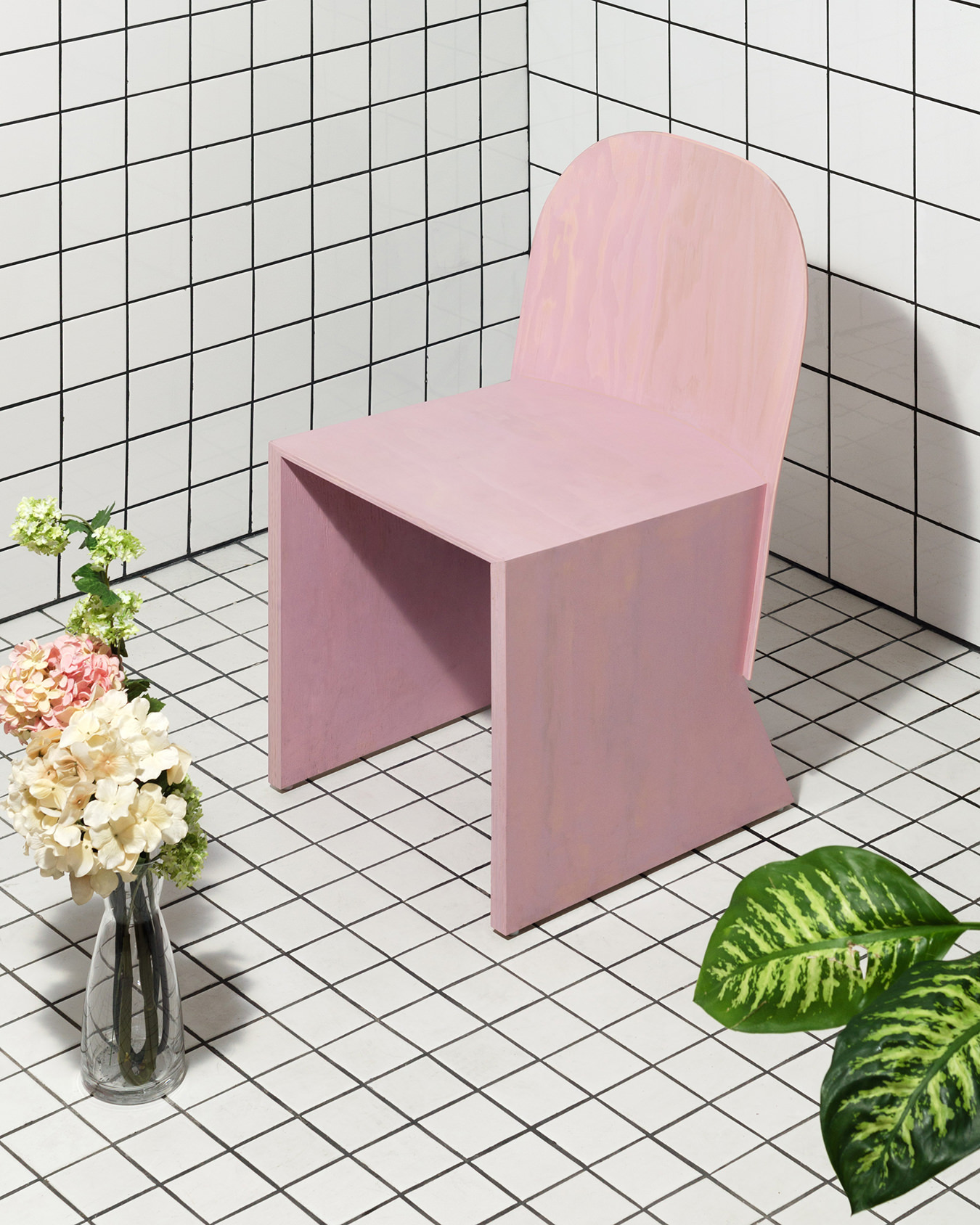
Knauf and Brown’s Florist Chair, designed for Blacktail Florist restaurant.
-

Knauf and Brown’s Hull Sofa, a semi private seating system.
-
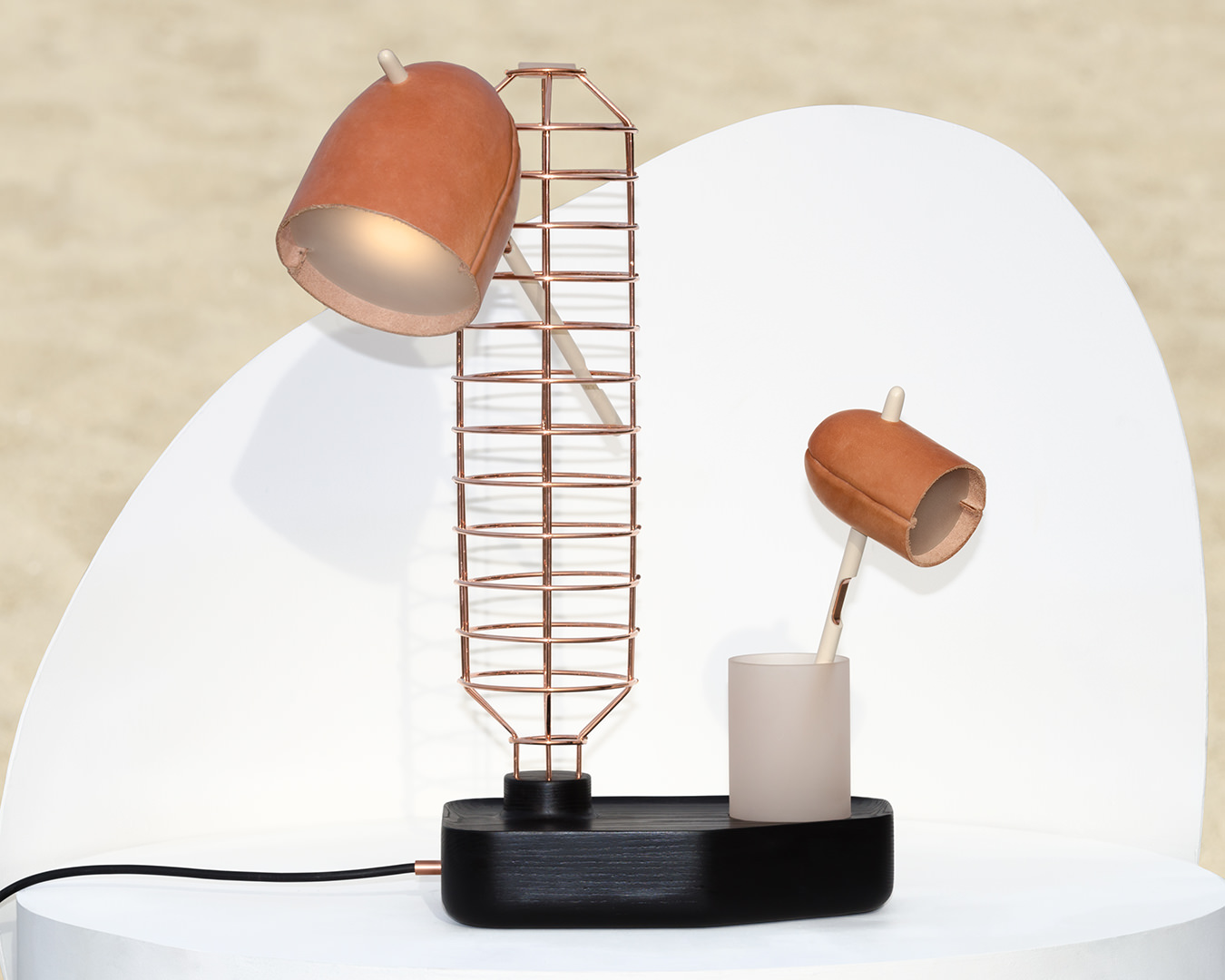
Knauf and Brown’s Standard Table Lamp.
-
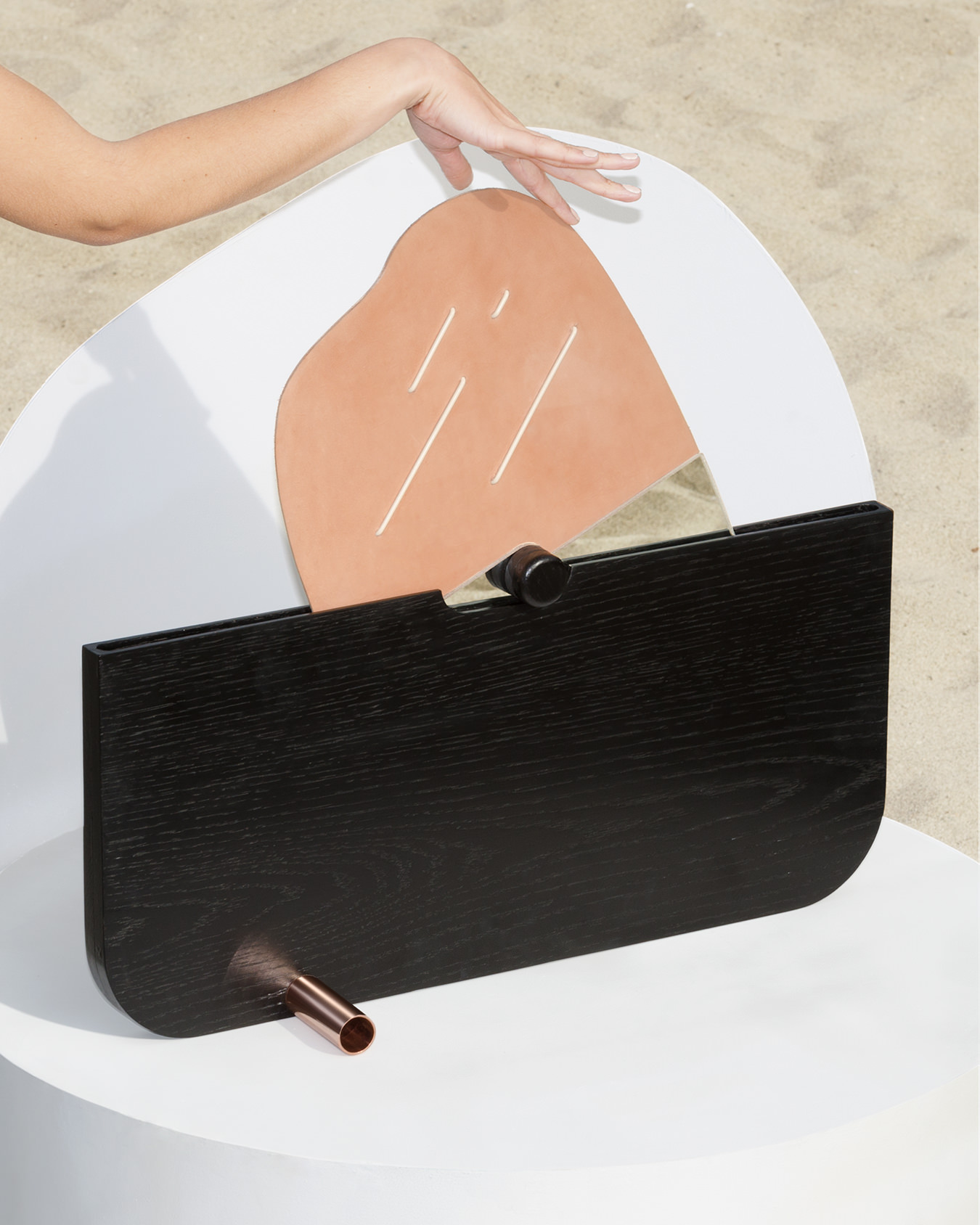
Knauf and Brown’s Standard Vanity Mirror.
-
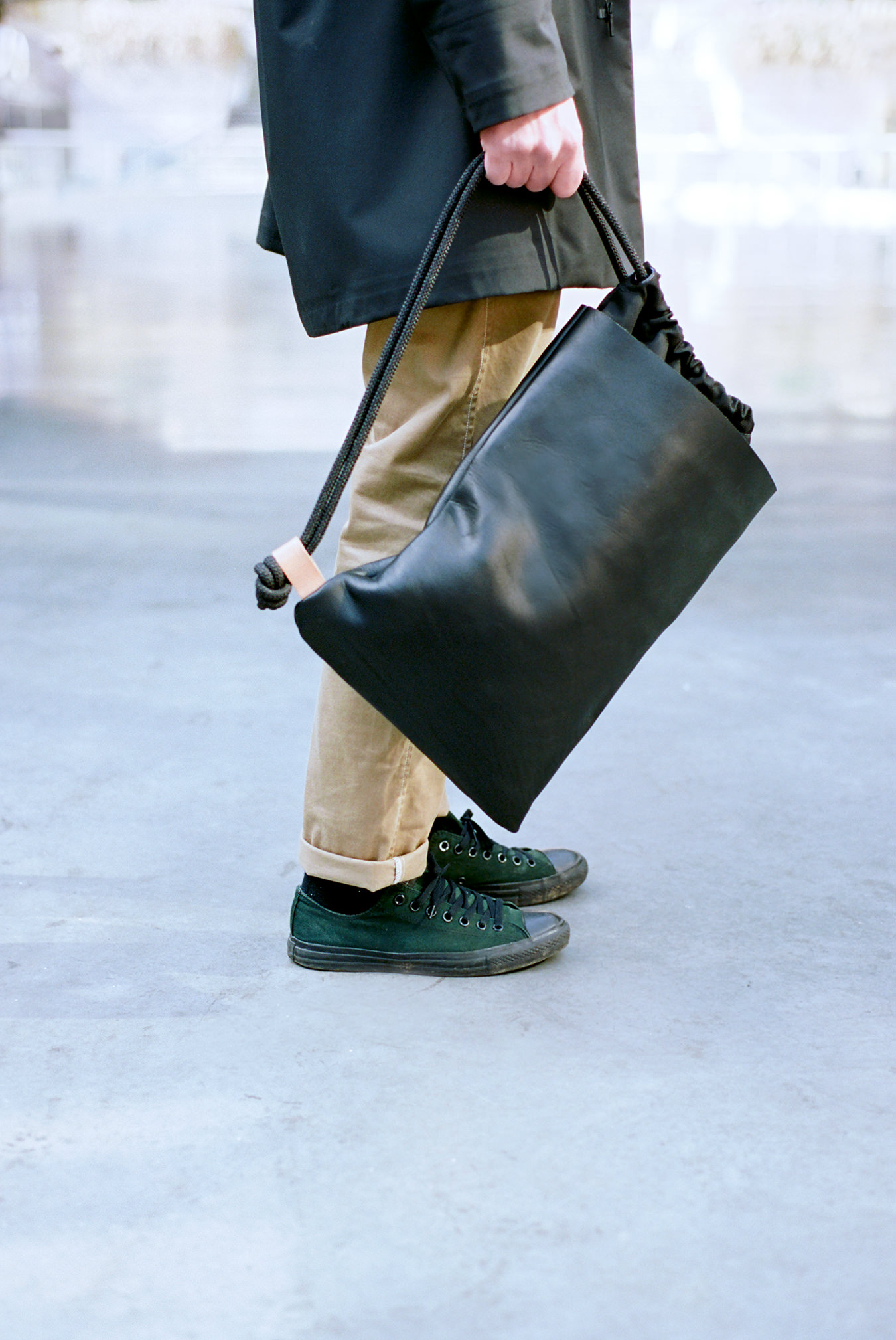
Knauf and Brown’s Dossier Sac. Photo by Jennilee Marigomen.
Knauf and Brown
The shape of things to come.

D Calen Knauf and Conrad Brown.
When they met 13 years ago outside the Vancouver Art Gallery, the downtown hub of skateboarding, D Calen Knauf and Conrad Brown found they had similar tastes in both tricks and terrain. Today, the two Vancouver natives, both 31, are lauded for resourceful, minimal, thought-provoking, and handsome work, ranging from furniture and lighting to leather bags, kids’ toys, and album covers, as well as their Heavystock shelving, now produced by Esaila but designed during their third year of school—which was only two years ago.

Knauf comes from graphic design (he designed apparel for Stussy and Adidas) and interned for New York lighting designers Rich Brilliant Willing, while Brown, self-taught, started in photography and worked in Bruce Mau’s Toronto office for a six-month internship earlier this year. (The two exchanged drawings daily and conducted “long, silent Skype calls” in which virtually the only sound was pen—for Knauf, fountain pen—on paper.) They established their studio three years into a four-year industrial design degree at Emily Carr University of Art + Design, where they went to translate the 2-D into 3-D and graduated in the spring of 2013.
“Teachers would scold us for admitting that we had made a decision based on aesthetics,” Brown says. “It got to the point where I based my entire thesis on the importance of aesthetic choices. And then I almost failed.” Likewise, Knauf’s Standard Collection, refined and launched by the two this summer, earned him a C-plus. Named for the automobile transmission—standard generally requiring more intention to drive than automatic—each of the three pieces, a mirror, a lamp, and a mobile side table, asks the user to make decisions about the object in order to use it.

Many view skating as counter culture, but it’s even more creatively contrarian than they realize. Brown says, “A skateboard isn’t meant to do the things people do with it: grinding a ledge [on the bottom of the deck] does not make sense; why not use the dedicated rolling surfaces that are your wheels? Because that’s the challenge: you’re given a set of constraints and it’s up to you to see where you can take it.” Knauf agrees: “We’re pretty firm believers that most of the cool things in contemporary culture can be traced back to skateboarding in one way or another. We owe a lot of our ability to see the world in a different shape to skateboarding—we’re used to looking at alleys, curbs, benches, and so on as a skateboard playground, always making something out of nothing.”
Making something out of nothing—or at least found objects and waste material—is how they made their Micro Studio floor lamp, which is sustainable on a couple of levels. They bound a beach stone and offcuts of oak, marble, and steel together with heat shrink tubing and nylon rope. Unlike products that idealize space via sleight of hand (hiding cords, for example), every component of the lamp is visible and essential to its function, and makes a virtue of being candid. “It hides nothing, and reveals all of its vulnerabilities,” Knauf says.
Functionality, eco-friendliness—eating your design spinach—doesn’t need to be unpalatable. Knauf and Brown are the champions of practical aesthetics, the guys, Brown admits, who are always thinking: Hell yes, we do need another chair in the world.
Photos provided by Knauf and Brown.



